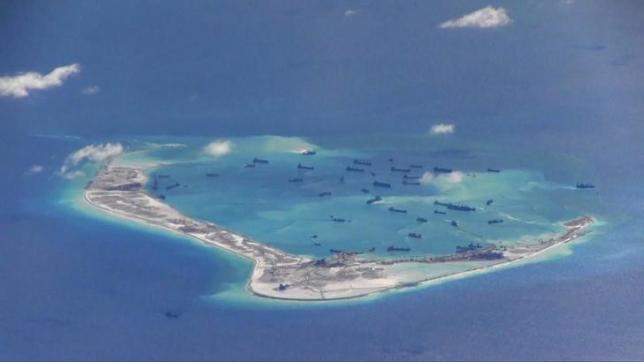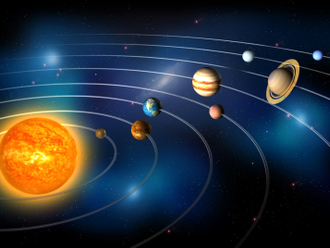
One of the most dangerous confrontations between the United States and China is heating up.
Warships are being deployed, bombers are taking wing and threats are being exchanged — all of it sparked by China’s growing mastery of the use of the world’s most overlooked natural resource: Sand.
The point of contention is a set of man-made islands China has built in a strategic and hotly-disputed patch of the South China Sea.
It’s one of the world’s busiest shipping routes, and home to some 10 per cent of the world’s fish. What’s more, billions of barrels of oil and trillions of cubic feet of natural gas lie under the sea floor.
So it’s no surprise that virtually every country in the region — China, Taiwan, Vietnam, Brunei, Malaysia and the Philippines — lays at least partial claim to a scattering of dozens of rocks and reefs called the Spratly Islands that sit strategically in that area.
But China has expanded its claims in the sea for decades, including some Spratly outcrops that it seized from Vietnam in a 1988 clash that left dozens of soldiers dead.
And, particularly since 2014, it has used its industrial might to create facts in the water.
Facts in the water
In recent years, China has built up an armada of oceangoing dredging ships, among the most technologically advanced in the world.
The country’s annual dredging capacity — the volume of sand and muck it can haul up from underwater — has more than tripled since 2000, to more than one billion cubic meters.
That’s more than any other nation.
Starting in late 2013, Beijing set a fleet of these dredgers to work raising millions of tonnes of sand from the sea floor and using it to firm its pieces of territory in the Spratly Islands. Within 18 months, these ships built nearly 3,000 acres of new land.
This type of megascale land reclamation is increasingly common.
In recent decades, advancing technology has made it easier and cheaper to move ever greater quantities of sand from ever greater depths and deliver it with ever greater accuracy onto predetermined places.
The biggest dredges today are more than 700 feet long. Stood on end, they would top a 60-storey apartment building.
They carry pipes that can pull up sand from 500 feet below the water’s surface. Countries from Singapore to the Netherlands are using them to expand their coastlines and even build new islands from scratch.
China has done the same. In 2015 alone it created the equivalent of two Manhattans of new real estate.
All told, according to a Dutch research group, human beings since 1985 have added 5,237 square miles (8,428 square km) of artificial land to the world’s coasts — an area about as big as Connecticut or the nation of Jamaica.
Military ambitions
But of even greater concern is how China’s island-building is serving its military ambitions. Almost as soon as the sand was dry on the Spratlys, China began building military bases.
Beijing’s armed forces have installed anti-missile weaponry, runways capable of handling military aircraft, structures that US officials believe are designed to house long-range missile launchers, and port facilities that may be capable of accommodating nuclear submarines.
This expansion of China’s military power in the Pacific is an intensifying flash point between China, the US and its Pacific allies.
At his confirmation hearings to become US secretary of state, Rex Tillerson compared China’s Spratly build-up to Russia’s invasion of Crimea.
In recent weeks, the US has flown B-52s over, and sailed two warships past, the disputed archipelago.
For its part, China landed a long-range bomber on one of the newly-made islands. In June, US Defence Secretary Jim Mattis denounced China’s build-up as “intimidation and coercion”.
Chinese President Xi Jinping responded that “we cannot lose even one inch of (our) territory”. All of which shows that in the 21st century, geopolitical power goes beyond who controls the territory.
— New York Times News Service
Vince Beiser is an award-winning journalist and author based in Los Angeles.










